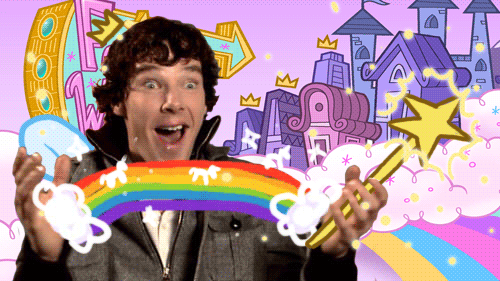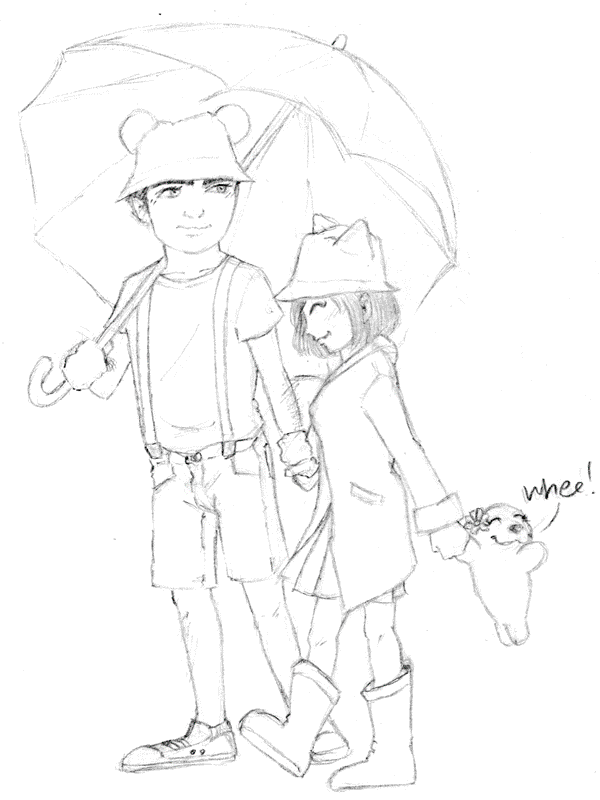How I Edit
I thought that for today's Industry Life post, I would provide a bit of a rundown on my editorial process. Editing is one of my favourite things to do in the world (good thing I work in publishing); there's nothing I like more than looking at a manuscript and figuring out how to tease out the writer's voice in such a way as to tell the best story possible. Every editor has a different editorial process, just as every writer has a different writing process, so bear in mind my methods are not universal. I am fairly systematic when it comes to editing manuscripts, but while the process might be structured and organised, editing itself is not so easily codified or quantified into a rigid "how-to". Like any creative discipline, it requires a blend of intuition, inspiration, and plain, old-fashioned hard work. I am a visual-verbal person, so I tend to envision manuscripts not as words on a page, but story entities existing in a three-dimensional mindscape. (I know, I know; it sounds like mystic woo-woo nonsense, but WHATEVER. :) I am MAGIC!)

A visual representation of me. Some liberties might have been taken with the likeness. But first things first: these are the steps I take when editing a manuscript:
A cold read.
Identify the story shape.
A second read.
An editorial letter.
Repeat steps 3 and 4 until story is in the right shape.
Fine-tuning read.
Line edits.
Final read.
Steps 1 through 4 is where the "artistry" of editing happens. The manuscript is, of course, first and foremost the author's property: I can't go in and change things willy-nilly to suit my own aesthetic tastes. But I love identifying the story a writer wants to tell, and I love finding ways to tease out those threads, to make the emotional heart shine.
1. Cold Read, or First Impressions are Crucial
When reading a manuscript for the first time, I try and wipe my brain of any preconceptions. I am going to approach the manuscript not as an editor, but as a reader. I don't take a lot of notes during a cold read; I want to form as holistic of an impression as possible. What is the story about? Who are my favourite characters? What did I like about it? What did I not like about it? After a cold read, I tend to sleep on it. My subconscious is fairly good at sorting out lots of information, and I often find that after a good night's rest, all the nebulous thoughts I had about a manuscript will have coalesced into a coherent whole.
2. Identify the Story Shape, or Finding the Core
This is where the "magic" happens. In my opinion, this is the very definition of editing. I tend to think of the one-sentence thread that describes the manuscript's emotional arc as the "story shape", which I tend consider the core, or the spine, or the structure of the book. It can be as simple and cliche as "A journey of self-discovery" or "Man discovers what he's strived for all his life may not be worth the effort". There are only so many stories in the world. In my opinion, the more archetypal the core story, the more subconscious resonance it has with a reader. What makes a work truly unique and different is how that story is told, rather than the core story itself. After all, you can build many different types of houses, but the core building materials and foundations will be the same no matter what. Once the story shape is identified, I know how to proceed. My brain is fairly systematic when it comes to organizing information; it moves from large conceptual levels to small detail levels fairly intuitively. It tends to view manuscripts a bit like this (but less linear and more...three-dimensional):
Core → Themes → Character → Plot details
Core identified, then we move on to themes. What themes feed into the core story? What character details feed into the general themes? What plot details inform both character and theme?
3. A Second Read, or Parts of a Whole
The second (or more) reads are done with a critical eye. I've taken off the reader hat and put on the editor hat. This is where I look for specific places that can be tightened or refined. If the first read was about absorbing the story as a whole, then this read is looking at its parts and how it all fits together. At this stage, I usually take notes, especially if I have questions. I find questions the most useful when it comes to editing because questions often inform an answer. It could be as simple as "Why does Character X leave home?" or as complicated as "What is the backstory between Characters A and B that makes them act in this way?" If identifying the story shape was essentially an "outside-in" read in that I was identifying the broadest, overarching story before getting further and further into the manuscript layers, then this second read is almost the opposite. I start with the smaller details and work my way out, an "inside-out" process during which work at the micro-levels so they feed and inform the macro ones.
4. An Editorial Letter, or Wherein I Try and Take My Three-Dimensional Mindscape and Describe It in Words
I won't lie; my editorial letters tend to be longish. I actually prefer jotting down the big bullet points in a general email and requesting that an author speak with me on the phone rather than writing all my thoughts into a formal letter. I feel speaking is much more organic than writing when it comes to creative genesis, and I'm much more in tune with the ebb and flow of a writer's process when I can speak with him/her. Because my three-dimensional mindscape of a manuscript is fairly complex and not easily quantified into a linear flow without getting intimidatingly long, I much prefer talking with the author directly. However, I tend to take the editorial letter(s) in stages. Biggest concepts first, then working my way down to the smaller things.
5. Repeat Steps 3 and 4 As Needed, or Filling in the Details
Growing up, I was a visual artist. In high school, I was part of a visual arts conservatory, and before we started any projects, we always did thumbnails and sketches before we started refining the sketches in more detailed drawings. One couldn't just paint an incredibly detailed shoe without first figuring out where the shoe fit in the grand scheme of things. Was it on a foot? Could you see the entire body to which that foot was attached? What position was the body in? What was the body doing in the scene? Etc. Each editorial pass is like another level of refinement in a painting. First, the general sketch in which the scene is blocked. Next, solidifying the shapes and filling in general ideas, like a background. Next, the lineart. Next, the color-blocking. Next, the shadows. Etc.

Here are the steps taken for a drawing I did of me, White-Harp, and my boyfriend Bear.
6. Fine-tuning Read, or What It Says On The Tin
Once the manuscript is pretty much in the shape it needs to be, then this read is essentially one about the real, nitty-gritty details. Like...figuring out on a sentence level whether or not it serves the core story.
7. Line Editing, or What's Your Style?
These are the cosmetic touches. If we compare editing a manuscript to building a house, then line edits are when you go in and figure out which work of art would look best in this corner, or whether or not French Regency or mid-century Scandinavian furniture best suits the house. At this stage, I will underline passages that I feel don't quite fit with the story, or point out on a sentence-level a character inconsistency, etc. Some editors heavily line edit (Raymond Carver's editor famously changed entire sentences); others apply a lighter touch. I'm one of the latter; I try not to mess too much with the writer's words themselves--only to point out places that I feel are weak.
7. Final Read
This last read is more or less me verifying that the manuscript is ready to be transmitted. Transmittal in a publishing house generally means sending the manuscript into production, when copyedits (oh yes, copyedits are something else altogether), first pass pages, galleys/ARCs, jacket copy, covers, etc. happen. Production is when a writer's words and story are put in the process of turning into a book. So there you have it! A long-winded treatise on how I edit, and how I view the process. All editors have a different process of course, but I tend to apply the visual art style: broadest to smallest. Hope you guys found this interesting!

